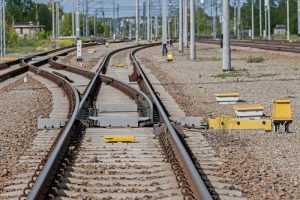 The “Boosting ERTMS deployment” report published by the Community of European Railway and Infrastructure Companies (CER) is highlighting the system’s vital role to create the Single European Rail Area which will ensure efficient and fast railway transport services and a digitalised transport system, ready to achieve the European Green Deal objectives.
The “Boosting ERTMS deployment” report published by the Community of European Railway and Infrastructure Companies (CER) is highlighting the system’s vital role to create the Single European Rail Area which will ensure efficient and fast railway transport services and a digitalised transport system, ready to achieve the European Green Deal objectives.
“An accelerated ERTMS rollout is vital for the modal shift envisaged in the Green Deal, under the precondition of suitable funding and financing options in place. CER strongly believes in the need for an industrialisation of ERTMS to tackle the existing bottlenecks with ERTMS deployment. The revision of the TEN-T regulation, which must promote climate friendly alternatives like rail, is equally essential if the ambitious target of ensuring a 90% reduction in transport emissions by 2050 is to be met,” CER Executive Director Alberto Mazzola said.
CER emphasises that ERTMS deployment must be supported with sufficient funding and financing, and that strong and centralised EU-level ERTMS governance is needed, governing funding, National Implementation Plans (NIP), resourcing, market uptake, migration and transition.
According to the European Court of Auditors, the capital investment for track side ERTMS deployment on the entire TEN-T core network is estimated at EUR 80 billion, and an additional EUR 11 billion includes the digital interlockings and the costs for onboard retrofitting of the entire.
In relation to CEF grants, as underlined by the European Parliament, CER points out that EU co-financing rates for ERTMS are insufficient. They should be increased with a co-financing factor up to 100%, in particular when such projects are embedded in ambitious large-scale accelerated ERTMS deployment plans, in order to incentivise ambitious ERTMS on-board deployment strategies in the Member States.
CER is highlighting that synchronised and harmonised ERTMS deployment of tracksides and onboards is vital. In addition, the deployment, including the Future Railway Mobile Communication System (FRMCS), must ensure both innovation and a sustainable migration process.
While also published “The revision of TEN-T Regulation 1315/2013”, CER says that the regulation Regulation must promote climate-friendly alternatives like rail. The organisation asserts that the promotion of a European high-speed rail network that is interoperable, linking European capitals and major cities, connecting urban nodes and airports, and supporting the development of international passenger services is crucial to achieve the climate change targets.
The organisation agrees with the creation of international passenger corridors that would be necessary to foster cooperation among operators and infrastructure managers and make international passenger routes attractive and affordable.
CEF calls for provisions to be included into the revision of TEN-T Regulation 1315/2013 to improve the cooperation between the governing bodies of Rail Freight Corridors and Core Network Corridors to allow the identification of the investment priorities of the CNC work plans in a way that considers market needs and the presence of rail infrastructure gaps and bottleneck.
In addition, CER also supports the inclusion of requirements for facilitating the operation of trains with a P/C 400 loading gauge in the TEN-T Regulation under certain conditions such as market needs and high prioritisation and funds. Regarding the possible introduction of minimum speed of passenger traffic, CER considers that the implementation of a 160 km/h minimum speed limit for passenger trains will not always be feasible. Instead, it must first be assessed whether there is a market need for this requirement.
The association is also underlining that the urban nodes are not sufficiently integrated in the current TEN-T Network. In addition, a significant number of last-mile infrastructure for freight and multimodal connections for passengers are missing, and the revision of the Regulation is a unique opportunity to redress the present situation. Especially, smooth connections to ports and airports are essential both in Europe and in third countries. Integrated and effective connections between sea gates and rail corridors in their hinterlands and forelands are needed.
Share on:



